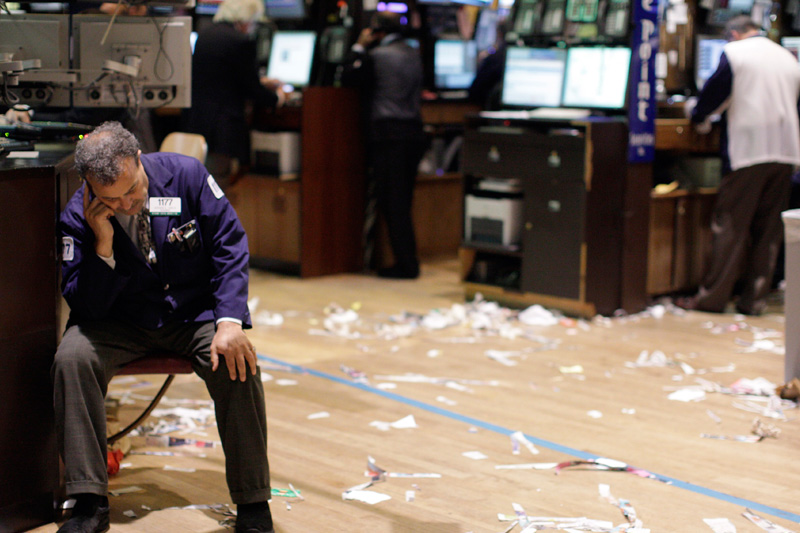U.S. stocks closed sharply lower on Friday, with the S&P 500 ending its worst week since August, as plunging crude oil prices compounded investor nervousness on expectations for the first U.S. interest rate hike in nearly a decade.
Oil dragged down market as a whole, as investors worried whether a weakness in commodities signaled a broader slowdown.
Furthermore, investors were worried about declines in China's yuan and in high-yield debt markets.
"Positioning has been clearly along the lines of taking risk exposure off," said Michael James, managing director of equity trading at Wedbush Securities in Los Angeles.
The sell-off gained ground ahead of the close as investors took profits on stocks such as Amazon.com (O:AMZN), which had performed well this year, said Dennis Dick, head of markets structure at Bright Trading LLC in Las Vegas.
"If you had a large oil position you need to raise cash, probably from some of your winners," he said.
The Dow Jones industrial average fell 309.54 points, or 1.76 percent, to 17,265.21 with every component in the index ending down. The S&P 500 lost 39.86 points, or 1.94 percent, to 2,012.37 and the Nasdaq Composite dropped 111.71 points, or 2.21 percent, to 4,933.47.
For the week, the S&P 500 fell 3.8 percent in its worst week since Aug. 21. The Dow fell 3.3 percent and Nasdaq dropped 4.1 percent for the week.
Small caps sold off as well. The Russell 2000 index fell 5.1 percent for the week, its biggest weekly percentage decline since May 2012.
The continued plunge in oil prices added to investor uncertainty ahead of the Federal Reserve's expected rate hike after the U.S. central bank's Dec. 15-16 meeting.
Brent futures fell to an almost seven-year low, while U.S. crude futures fell to just above $35 a barrel after the International Energy Agency said it expected the supply glut to worsen in 2016 as demand slows and OPEC shows no signs of slowing production in its fight for market share.
Adding to the somber mood, China's yuan currency fell to its lowest in 4-1/2 years on concerns about the country's slowing economy and expectations of a U.S. rate hike.
James of Wedbush said investors are worried about high-yield markets, especially as it relates to high-yield debt and energy needs after New York-based Third Avenue Management said Thursday it was trying to liquidate a roughly $1 billion junk bond fund in the biggest failure in the U.S. mutual fund industry since the 2008 financial crisis.
Tracking oil prices, the S&P energy index fell 3.4 percent, leading the decliners among major S&P sectors. The index has lost 11 percent since the beginning of the month in its worst month since September 2011.
The materials index was down 2.77 percent, weighed down by DuPont (N:DD) and Dow.
Both DuPont and Dow Chemical shares were down following a deal valuing the combined entity at $130 billion, falling 5.5 percent and 2.8 percent respectively.
Declining issues outnumbered advancing ones on the NYSE by 2,745 to 376, for a 7.30-to-1 ratio on the downside; on the Nasdaq, 2,388 issues fell and 448 advanced for a 5.33-to-1 ratio favoring decliners.
Adobe Systems (O:ADBE) was the S&P 500's sole new 52-week high for the day. The index had 43 new lows; the Nasdaq recorded 19 new highs and 187 new lows.
About 8.3 billion stocks traded on U.S. exchanges compared with the 6.98 billion average for the last 20 sessions, according to Thomson Reuters data.
